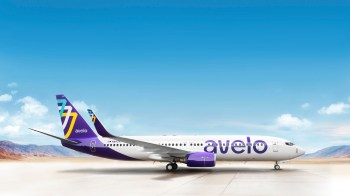Pilot shortage grounds flights at regional airports
At 7:30 in the morning, the terminal inside Cheyenne, Wyoming’s regional airport looks like a weary traveler’s dream. It’s quiet, there are no lines and parking is free. But Susan Mark is still tense.
“I’m just hoping there is a plane and a pilot,” she says. “Because I have had both not show up before.”
Fellow passenger Julia Tipsword says more than half the time her flight out of Cheyenne is canceled. The airline does accommodate her, she says — by putting her on a bus to the Denver airport.
These sorts of experiences may explain why it’s so empty here: This morning’s flight to Denver has seven people on it.
Jim Schell, aviation manager at Cheyenne Regional, isn’t surprised the flight is so empty. Daily flights out of Cheyenne have been cut in half in the last year, and cancellations have skyrocketed. Small airports need to have 10,000 people get on and off planes each year to qualify for the full amount of Federal Aviation Administration infrastructure funding. For Cheyenne, that comes to $1 million a year. This year, the airport won’t even get half that many passengers and as a result its federal funding will drop by about $800,000, Schell says.
That money means “being able to reconstruct portions of our runaway when we need it,” Schell says. “It definitely is a big deal, and it is not going to go away.”
Lots of small airports are on track to lose FAA funding this year, and that is going to hurt. In Wyoming alone, regional airports generate $1.4 billion in annual economic activity. Regional airports may be suffering but it is not their fault.
The problem is a lack of pilots.
A few blocks from Cheyenne Regional is Wings of Wyoming, a local flight school that used to train a lot of pilots who flew for the local airline. But last year, Congress raised the minimum number of flight hours needed for a commercial pilot license from 250 to 1,500. Members were reacting to a deadly crash caused by an inexperienced pilot. The change has had a big effect on the airline industry.
Putting in a few hundred hours to get hired at a regional airline was doable, says flight instructor Ron Burnett. “But to get 1500 hours, that takes a long time. That could take a couple years,” he says.
Traditionally, young pilots joined regional airlines, which served as a feeder system for national carriers. But Burnett says the new flight-hour standards have made it extremely difficult for young pilots to even qualify for a regional job.
Roger Cohen, head of the Regional Airline Association, says regional airlines and airports are hurting now, but bigger cities are next. About a quarter of the pilots at major airlines are expected to retire over the next six years or so, and they’re going to need to be replaced, he says.
“And where are those pilots going to come from? The pipeline has not only been shrunk, the pipeline has been severed,” Cohen says.
There is some hope for small airports like Cheyenne Regional: A House Republican has proposed a law that would require the FAA to keep them fully funded. That would help in the short term, but without a fresh crop of pilots, these airports won’t be bustling anytime soon.
There’s a lot happening in the world. Through it all, Marketplace is here for you.
You rely on Marketplace to break down the world’s events and tell you how it affects you in a fact-based, approachable way. We rely on your financial support to keep making that possible.
Your donation today powers the independent journalism that you rely on. For just $5/month, you can help sustain Marketplace so we can keep reporting on the things that matter to you.


















